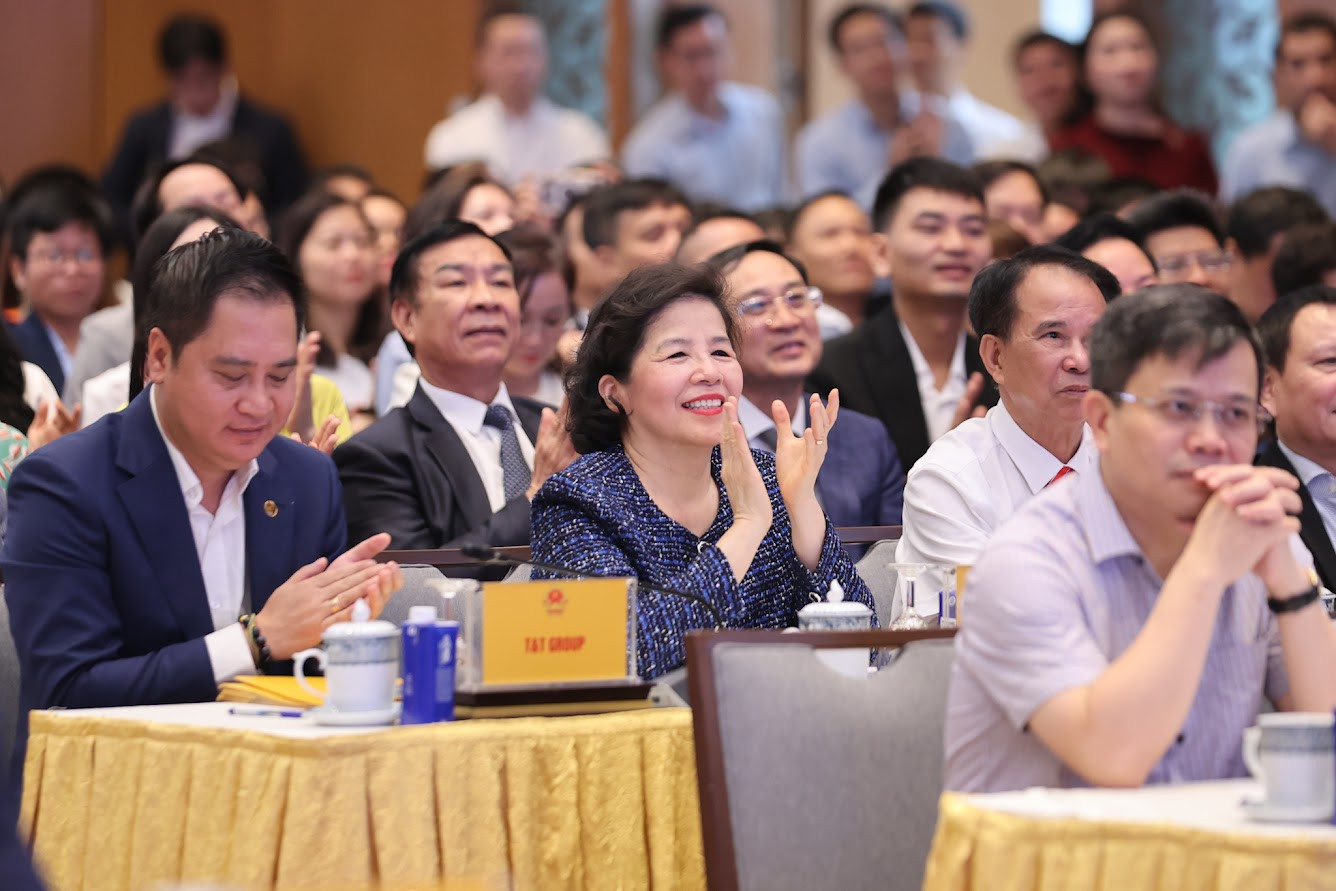
“You can’t just ignore it,” said Prime Minister Pham Minh Chinh about the core nature of the state’s functions, duties, and authority toward citizens and businesses. He instructed leaders of ministries, sectors, and localities to resolve business requests, difficulties, and proposals within two weeks.
“You must speak up, give ‘yes’ or ‘no’ answer to enterprises, and notify as far as problem is resolved. Keeping quiet or suppressing enterprises’ questions and proposals is unacceptable," Chinh said at a dialogue with businesses and associations about the Politburo’s Resolution 68 on private sector development, replying to a proposal from Vinamilk CEO Mai Kieu Lien.
“If we have issues or obstacles arisen, we hope ministries, branches, and the government address them quickly. For businesses, seizing an opportunity can propel us 5-10 years forward, but missing it could set us back 50 years. In our company, if an issue escalates to the CEO, the final decision must be made within 48 hours,” Lien said.
“For the government, I hope there’s a defined timeframe - from when an issue arises to when it reaches the PM - for resolving business obstacles,” she added.
Institutional bottlenecks, frankly, are numerous, both in quantity and impact on the business environment.
Directive affecting thousands of businesses
Nguyen Van Than, Chair of the Vietnam Association of Small and Medium Enterprises, cited Directive 07 dated March 2, 2012, concerning production and business facilities licensed before Industrial Zones were established.
Currently, tens of thousands of production facilities, especially household businesses, are facihng difficulties due to regulations tied to this directive. Without timely solutions, many facilities are at risk of closure due to lack of time to convert or meet new requirements.
The question is why a 13-year-old directive still affects hundreds of thousands of businesses outside IZs, even overriding laws and decrees?
Than proposed that the government review and abolish this directive as soon as possible.
5 months waiting for MPI’s answer
Meanwhile, Nguyen Quoc Hiep, Chair of the Vietnam Construction Contractors Association, praised Resolution 68’s view which considers businesses as subjects to serve, not manage.
“This resonates deeply with businesses. However, implementing the changes is really a revolution in the mindset and awareness of today’s public servants,” he said.
He cited a case that shows how complicated procedures adversely affect businesses.
When bidding for projects involving land use rights in localities, since the regulations were not clear enough, the local Department of Planning and Investment told the business to consult the Ministry of Planning and Investment (MPI), specifically its Bidding Department and Legal Affairs Department. The enterprise had to wait five months for the answer.
Unsurprisingly, the response was vague, merely citing laws and instructing localities to “strictly observe the laws”.
After those five months, the business had to consult the Ministry of Agriculture and Rural Development and the Ministry of Natural Resources and Environment, taking a total of seven months to navigate unclear procedures.
He proposed that local authorities organize a meeting with investors and producers once every six months, where businesses can complain and make suggestions, while state agencies can collect feedback to improve their management work.
3 years and 16,000 regulations
Businesspeople all agreed that administrative procedures for implementing the projects using land are even more complicated.
The projects have to observe the regulations of at least 12 laws, with 20 decrees and circulars. Meanwhile, circulars change all the time.
It takes at least 18-24 months to follow all necessary procedures. The average time is approximately three years.
Such institutional bottlenecks are not few, from business conditions, standards, and criteria to convoluted, incompatible administrative procedures.
According to a government report, by May 20, 2025, ministries, branches, and localities had recorded 6,358 administrative procedures (5,801 under ministries, 557 under localities), with 4,377 (68.8 percent) related to production and business; 8,977 business conditions; 3,086 specialized inspection products; 886 technical standards and criteria tied to production-business procedures; and 640 business reporting regimes.
These regulations are up to 16,000, and at least 30 percent of which must be removed to align with Chinh’s directive at the May 2025 government meeting on law-building.
He demanded ministries and agencies to focus on resolving institutional bottlenecks, with 2025 as the year to clear law-related obstacles.
The Prime Minister called for a fundamental shift in law-making mindset—ensuring state management while encouraging creativity, unleashing production capacity, and unlocking all development resources.
However, the issue lies not in the vision, which is now very clear, but in the execution capacity and genuine will to reform at all levels and sectors.
If the Prime Minister’s spirit remains at the central level and doesn’t permeate localities where businesses interact daily, efforts will remain only on paper.
Lan Anh